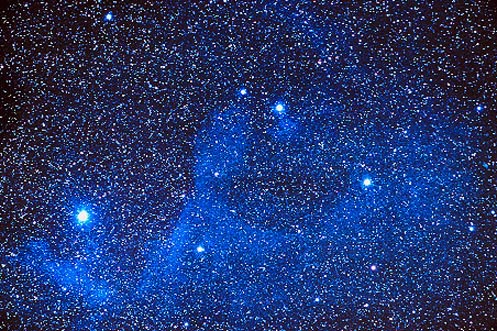
|
Credit & Copyright: G. Greaney
Explanation:
Wisps of dust fill the space between the stars. This
dust is usually invisible,
subtly acting to dim the light of more distant stars.
Sometimes this
dust is thick and prominent
as dark patches on otherwise bright emission nebulae.
Other times this
dust may show
itself by reflecting the light of bright, nearby stars. Because
bright stars tend to be blue,
and because dust reflects
blue light more easily than red,
the resulting
reflection nebula
usually appears blue.
Pictured above
is the reflection nebula Sharpless 2-1 in the
constellation of Scorpius.
|
January February March April May June July August September October November December |
| ||||||||||||||||||||||||||||||||||||||||||||||||
NASA Web Site Statements, Warnings, and Disclaimers
NASA Official: Jay Norris. Specific rights apply.
A service of: LHEA at NASA / GSFC
& Michigan Tech. U.
Based on Astronomy Picture
Of the Day
Publications with keywords: dust - reflection nebula
Publications with words: dust - reflection nebula
See also:
